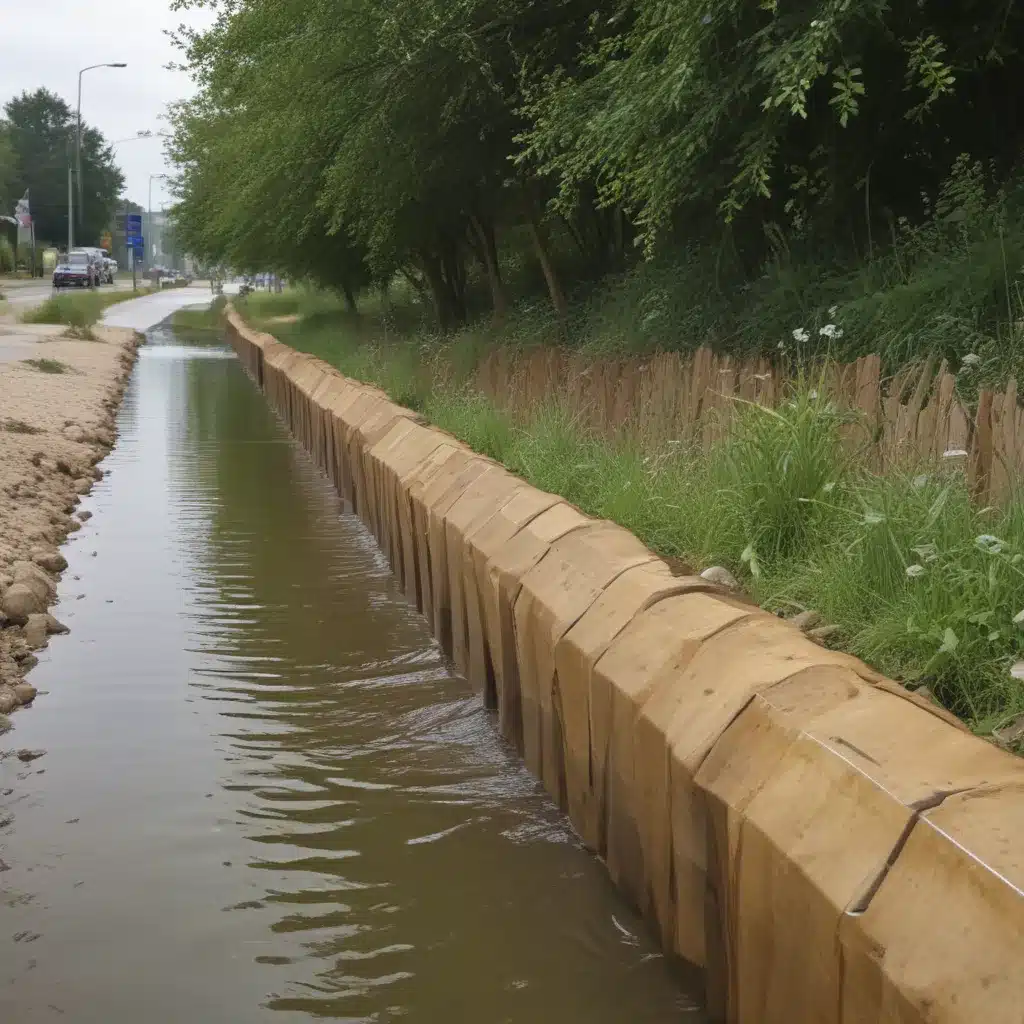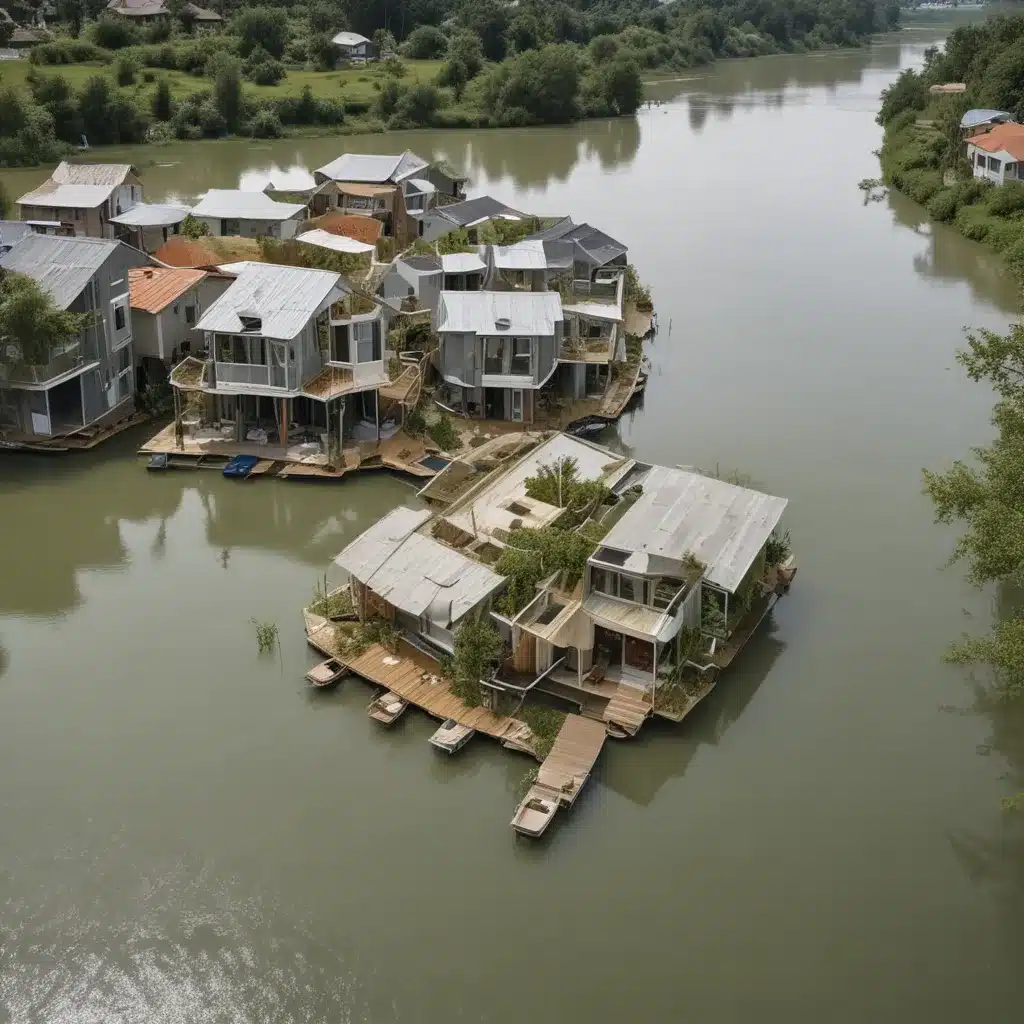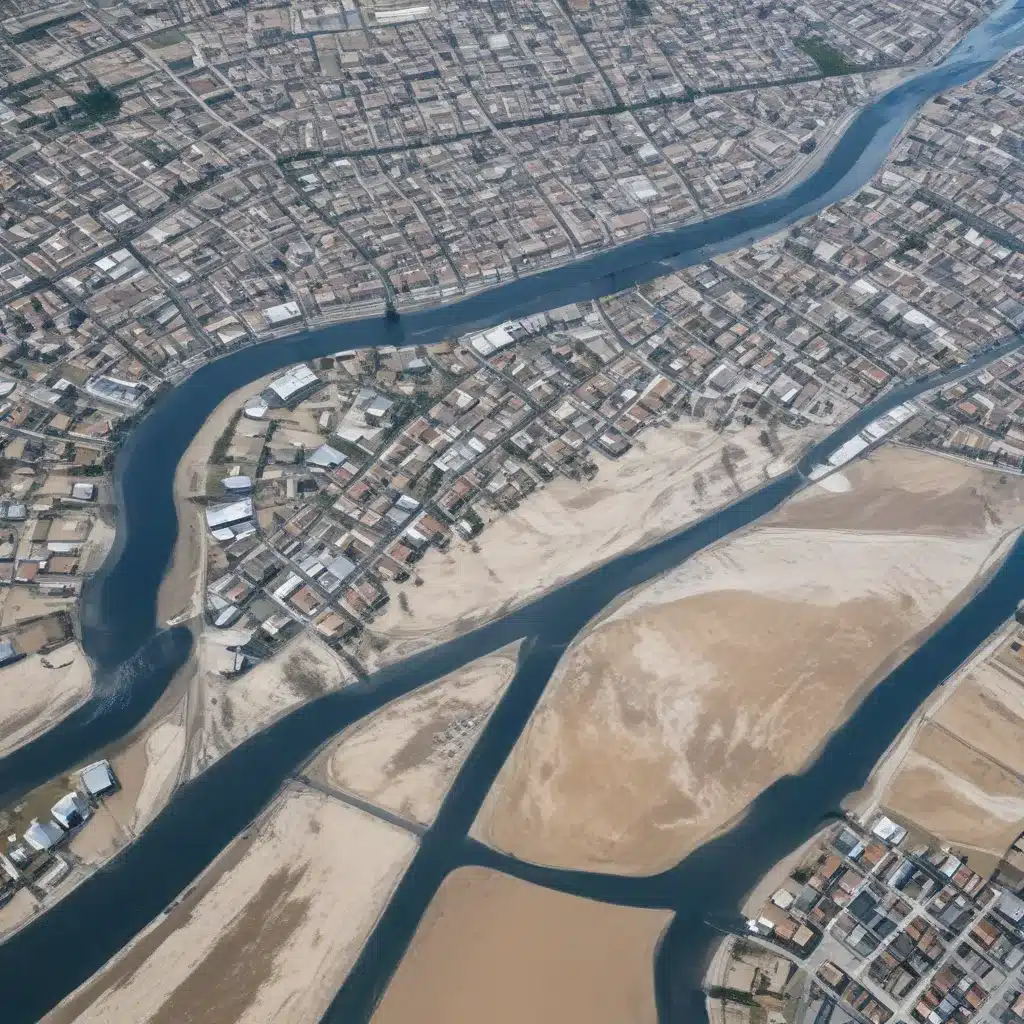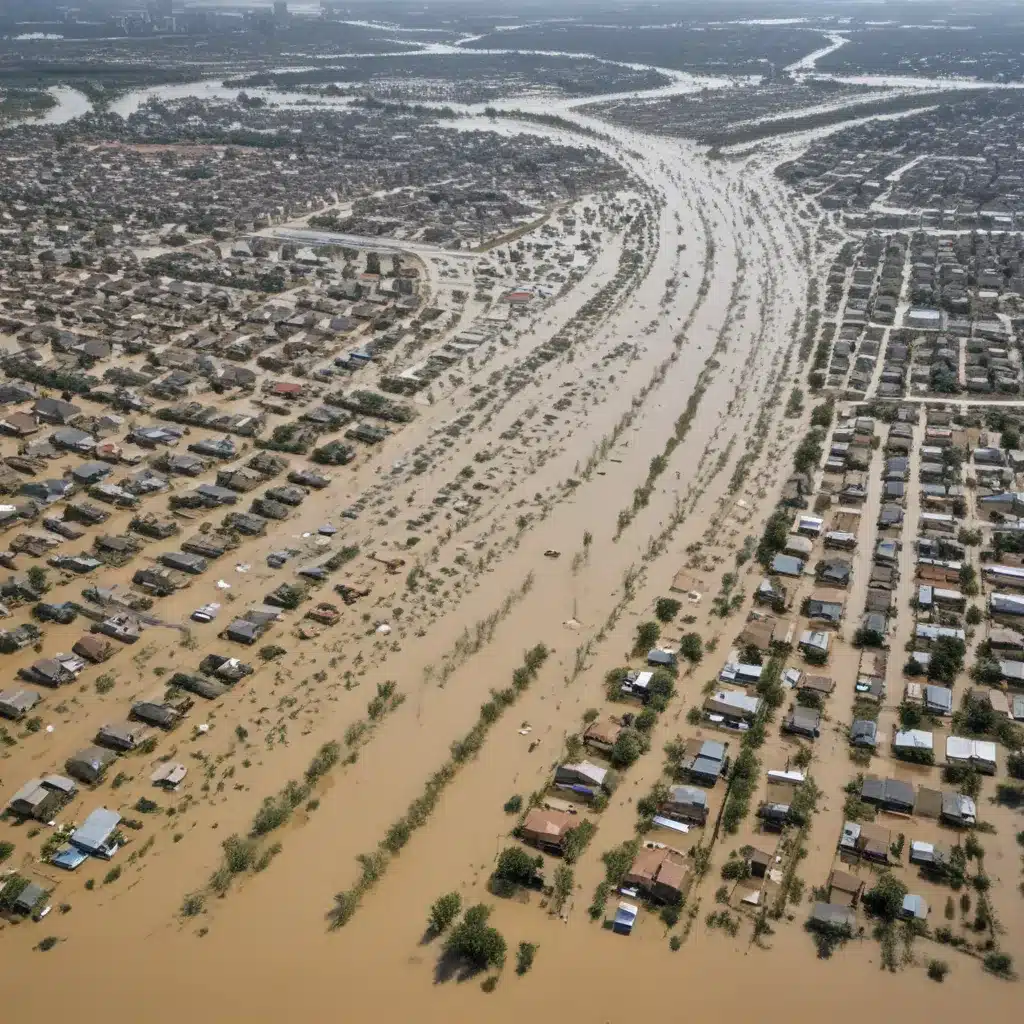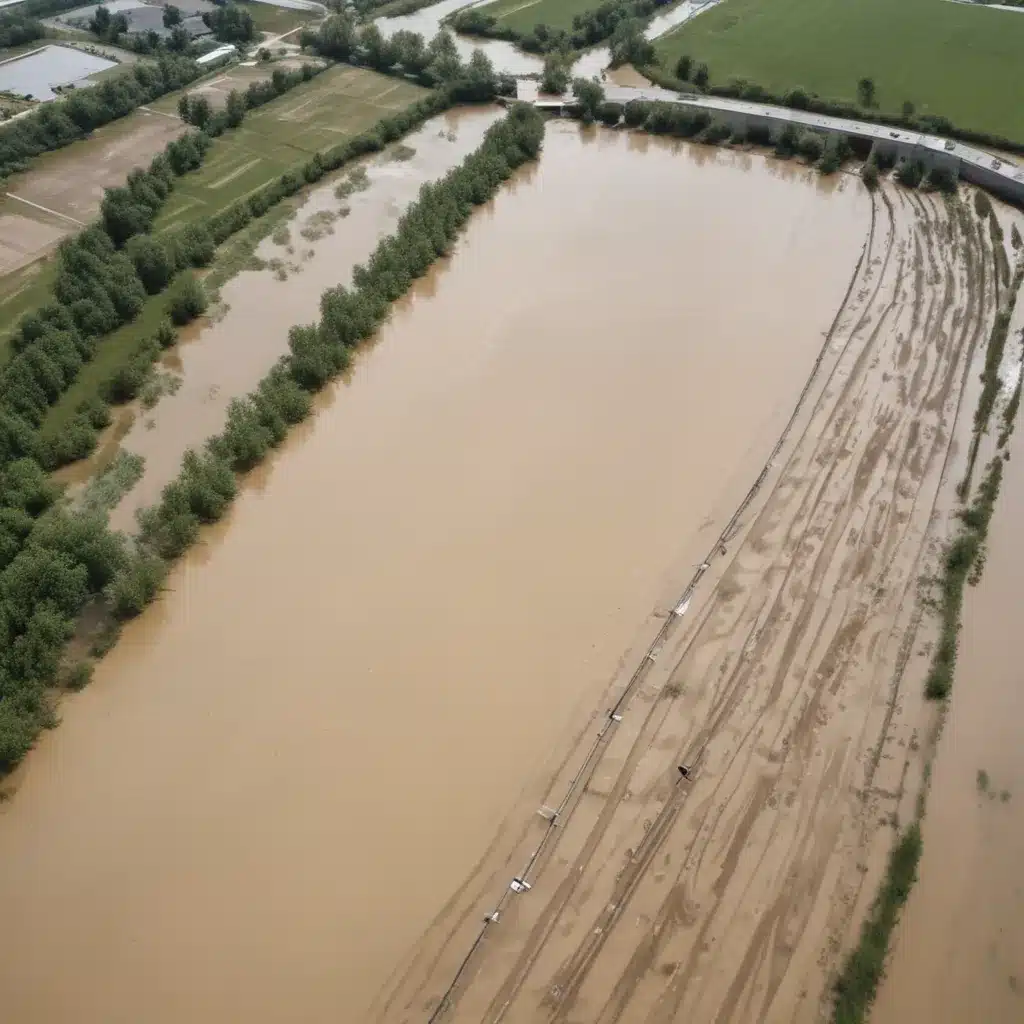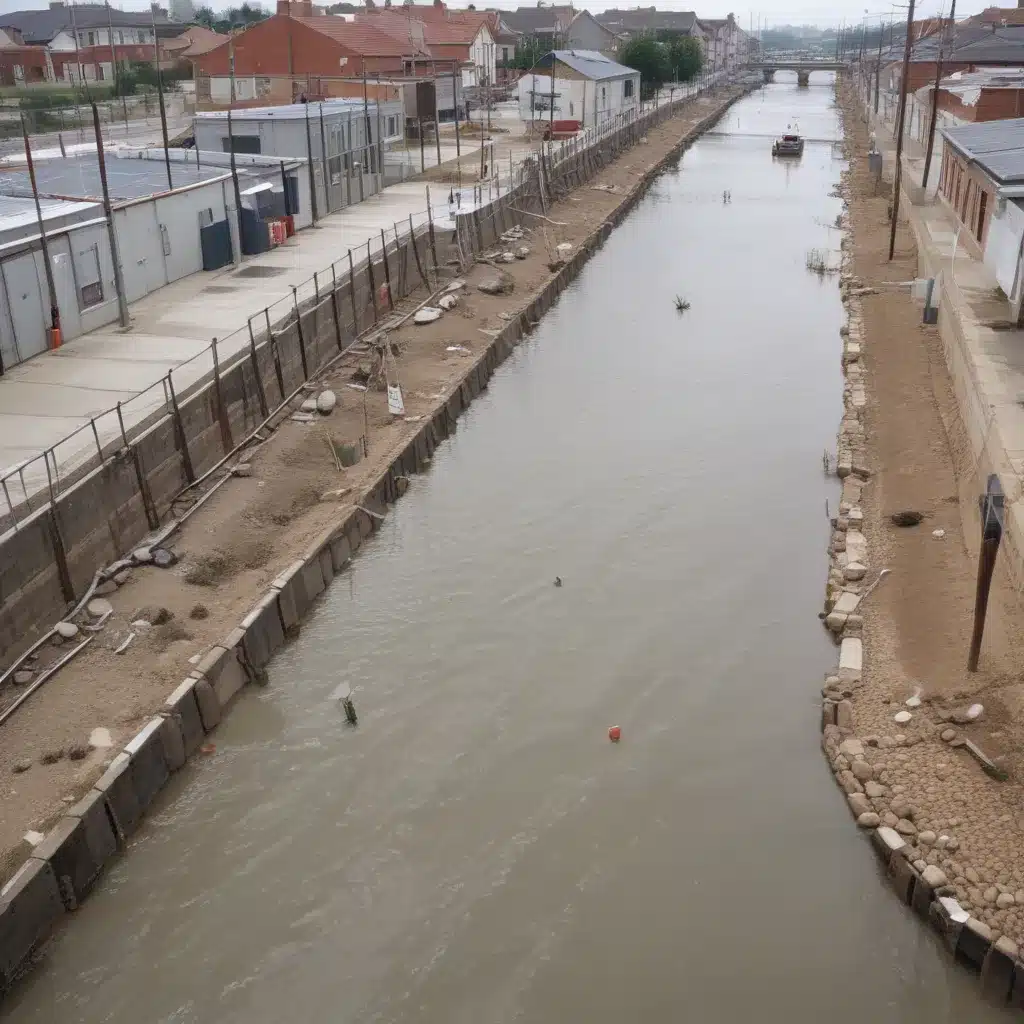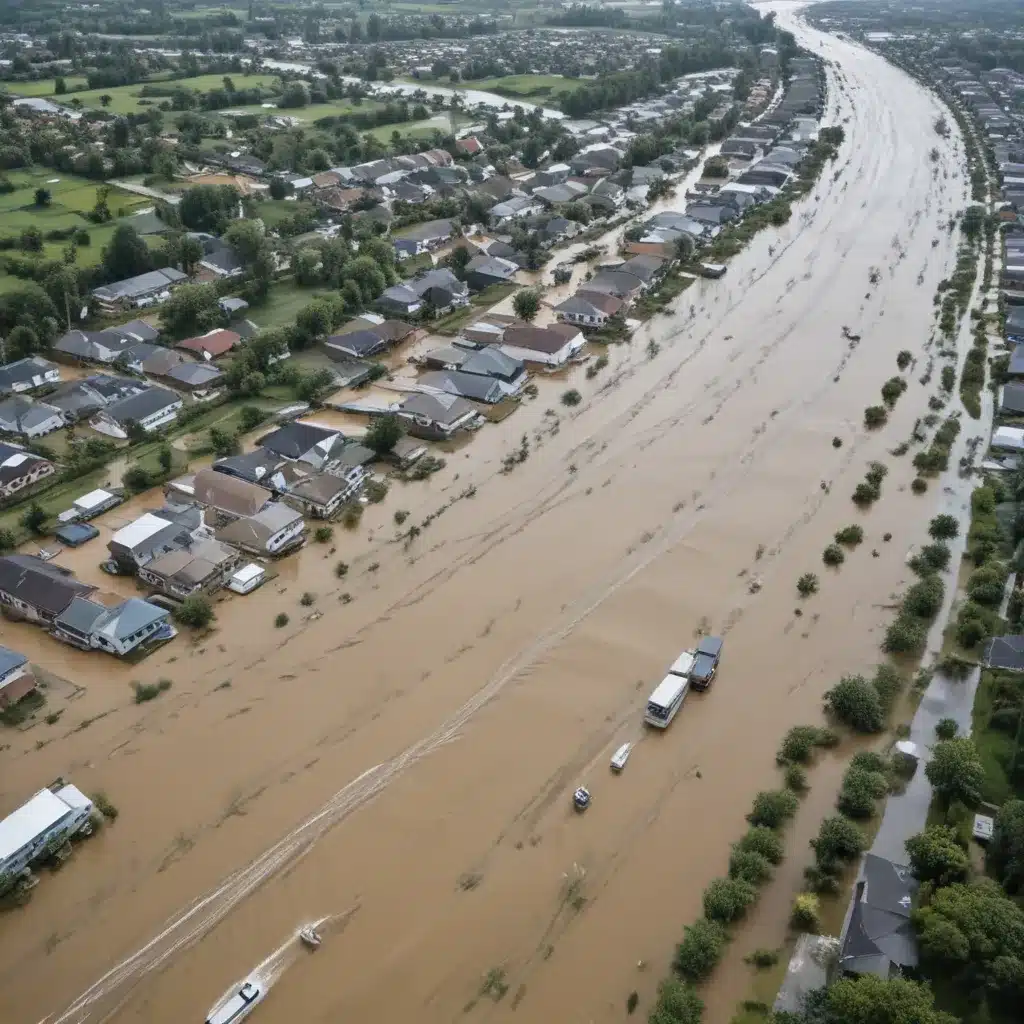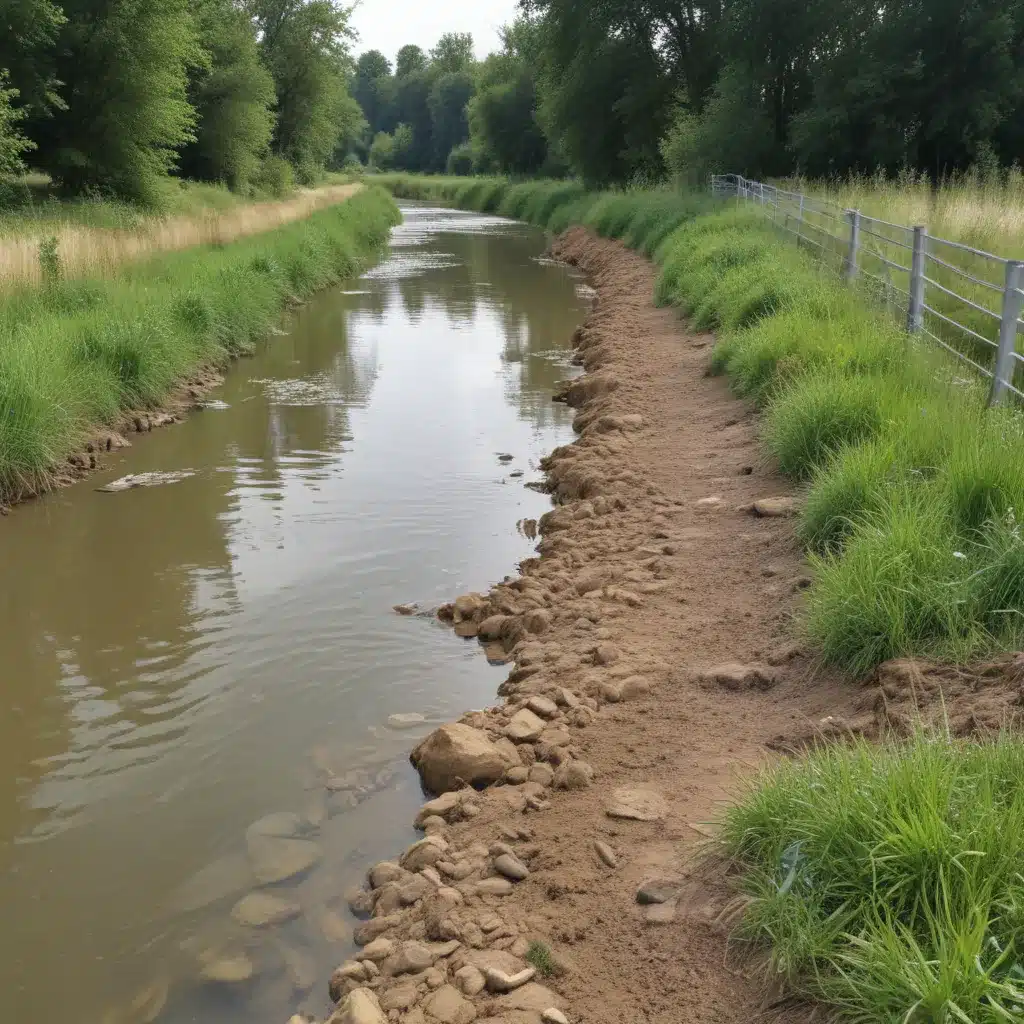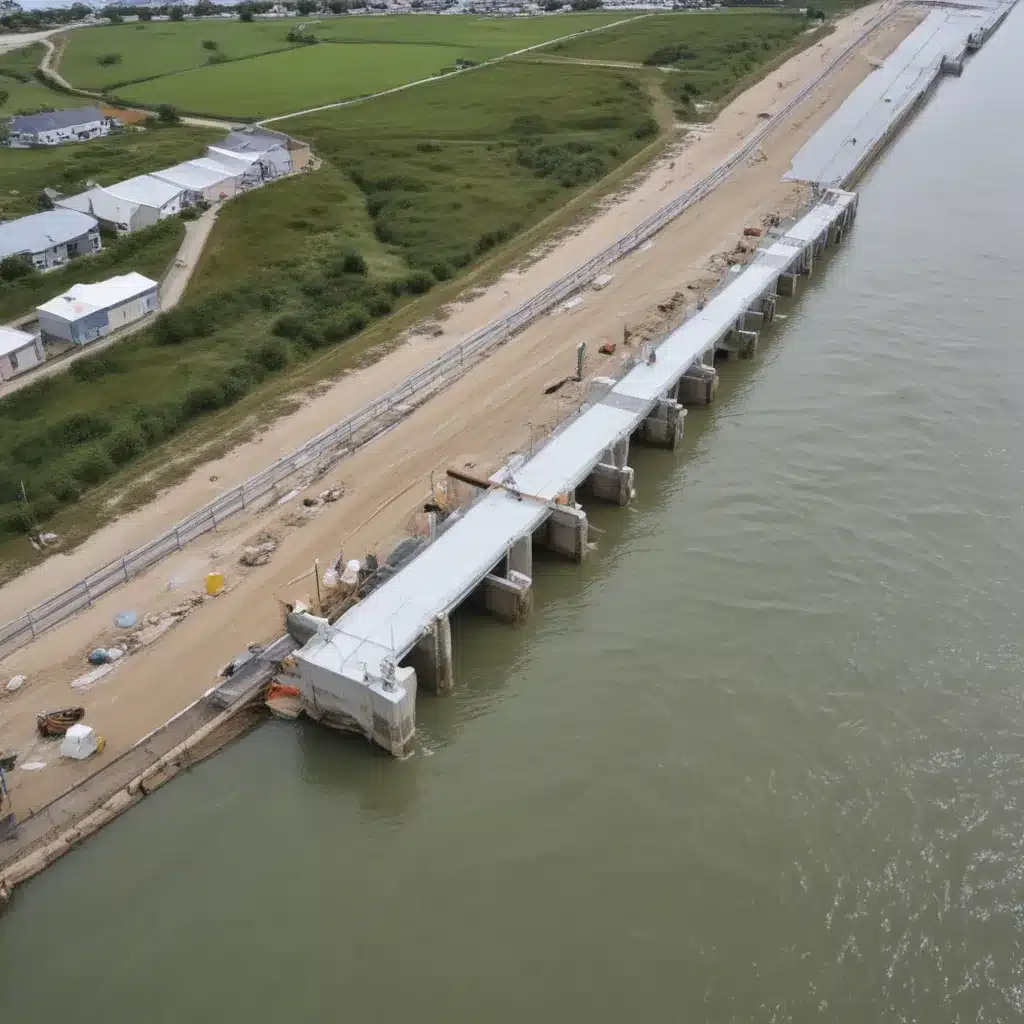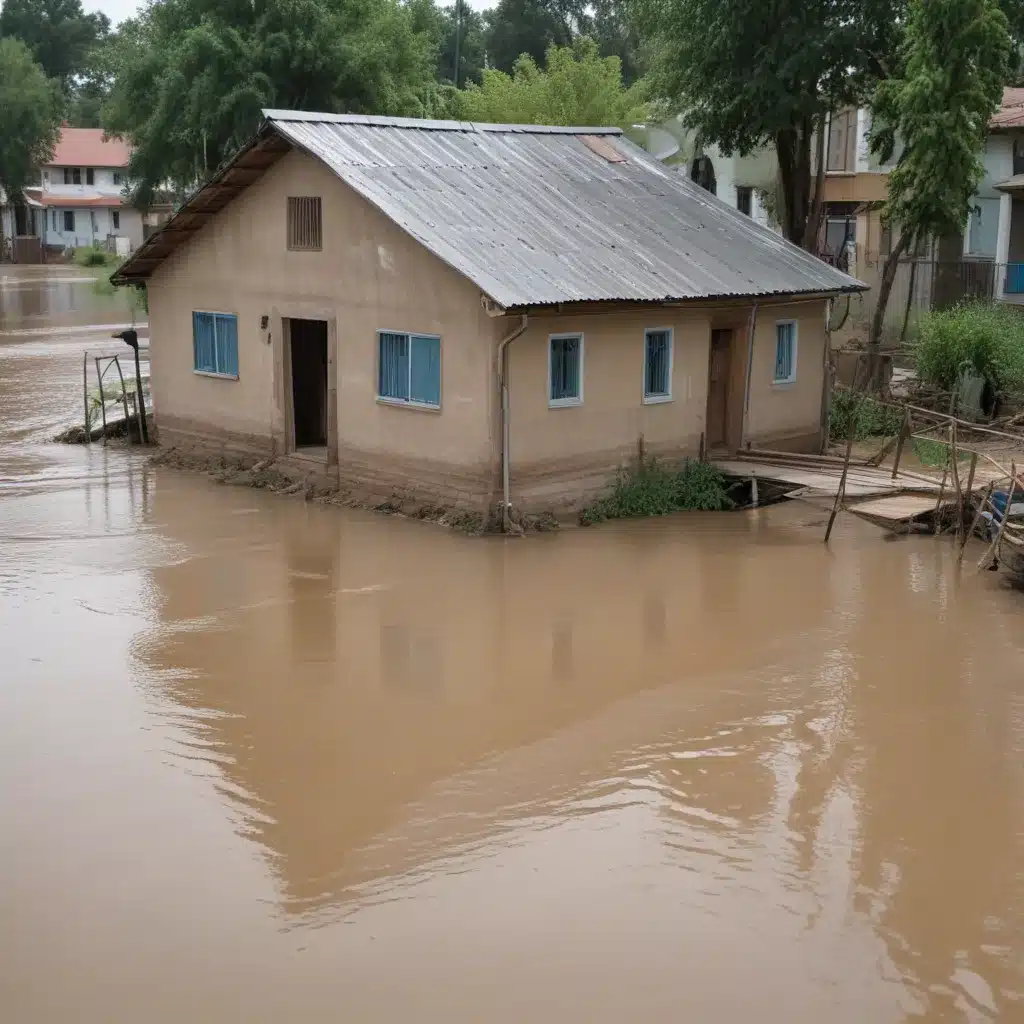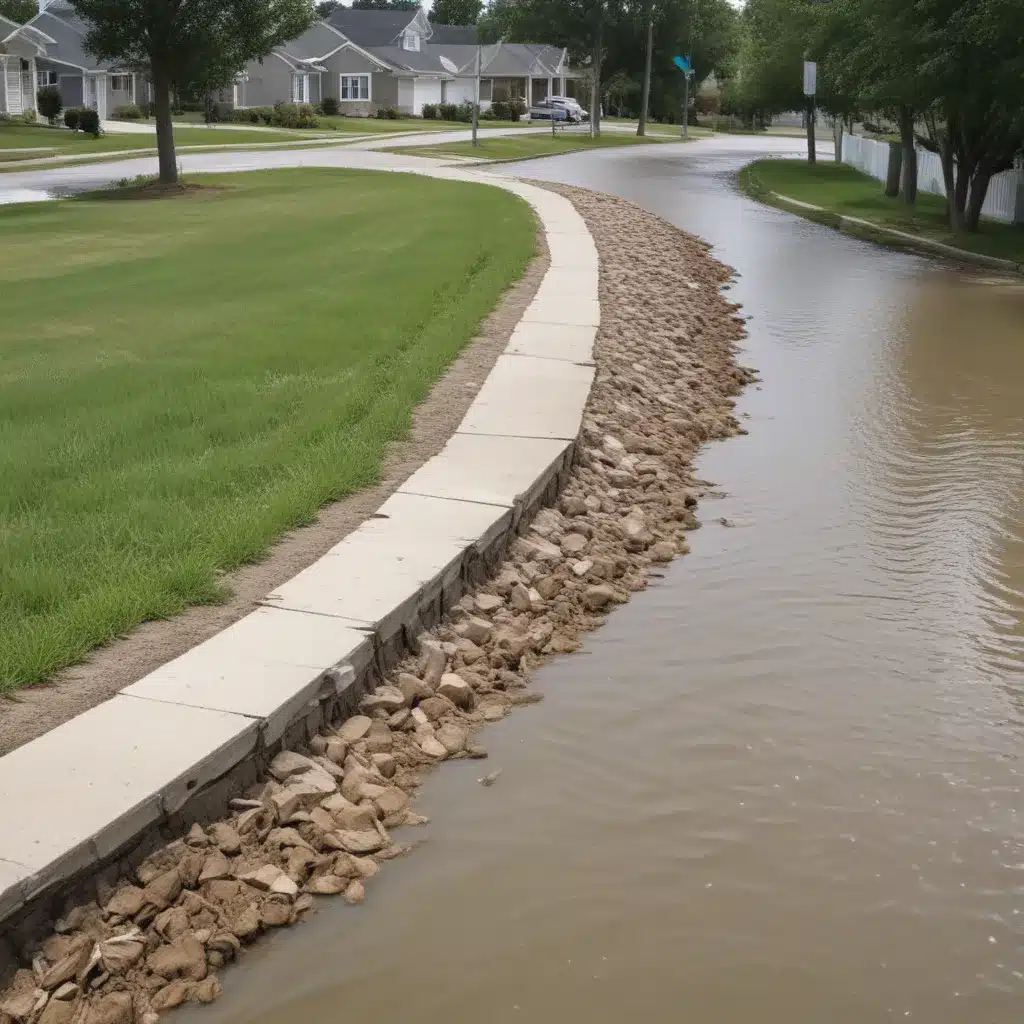
Floods are a persistent and growing threat to communities worldwide. Between 2008 and 2017, floods claimed an average of 5,000 lives per year globally and resulted in over $1 trillion in economic losses over the past four decades. Climate change projections indicate that the frequency and intensity of floods will increase in many regions in the coming years, further exacerbating the risks. Developing effective flood control and mitigation strategies is therefore crucial for building resilient communities.
One of the key challenges in flood risk management is addressing compound flood events – situations where multiple flood types occur simultaneously or in rapid succession, often leading to cascading impacts. Floods can arise from a variety of physical processes, including fluvial flooding (river/stream overflow), pluvial flooding (urban stormwater/surface water accumulation), and coastal flooding (storm surges, high tides, and sea level rise). These flood types are driven by different meteorological and hydrological mechanisms, requiring specialized forecasting and modeling approaches.
Traditionally, flood early warning systems (EWS) have been designed to monitor and forecast individual flood types in isolation. However, this siloed approach can be problematic during compound flood events, as end-users (e.g., emergency managers) may receive contradictory or confusing information from multiple flood-specific systems. To enhance decision support and enable a more coordinated emergency response, there is a growing need to integrate forecasting and impact assessment approaches for different flood types into a unified, multi-hazard framework.
This article explores the concepts and practical implementation of compound flood risk management, focusing on the integration of pluvial, fluvial, and coastal flood hazards. We will discuss strategies for assessing compound flood risks, designing multi-faceted flood control systems, and developing impact-based early warning services to support disaster preparedness and response.
Assessing Compound Flood Risks
Effective flood risk management starts with a comprehensive flood risk assessment that quantifies the likelihood and potential consequences of flooding. This process typically involves three key steps:
-
Hazard Identification: Mapping the spatial extent, depth, and probability of flooding from various sources (e.g., rivers, urban drainage, coastal areas) under different scenarios.
-
Vulnerability Analysis: Evaluating the exposure and susceptibility of people, assets, and critical infrastructure to the identified flood hazards.
-
Risk Quantification: Estimating the potential economic losses, social impacts, and environmental damage resulting from flood events of varying magnitudes.
Traditionally, flood risk assessments have focused on individual flood types in isolation. However, this approach fails to capture the complex interactions and cascading effects that can occur during compound flood events. For example, heavy rainfall can simultaneously trigger fluvial flooding in rivers, pluvial flooding in urban areas, and coastal flooding due to storm surges – each with their own spatial patterns and temporal dynamics.
To address this challenge, researchers have developed advanced modeling techniques to simulate compound flood scenarios. These approaches typically involve the integration of several numerical models, such as hydrologic, hydraulic, and storm surge models, to capture the complex feedbacks and interdependencies between different flood-generating processes. By considering a range of potential compound flood combinations, risk assessors can better quantify the overall flood hazard and associated impacts on communities.
Designing Integrated Flood Control Systems
Flood risk management strategies can be broadly classified into two categories: structural measures and non-structural measures. Structural measures involve the construction of physical flood control infrastructure, such as:
- Levees and Floodwalls: Engineered barriers designed to contain floodwaters and protect inland areas.
- Detention and Retention Basins: Temporary storage facilities that attenuate flood peaks and reduce downstream flows.
- Pumping Stations and Drainage Networks: Engineered systems that remove excess surface water and manage urban stormwater.
- Coastal Protection Structures: Seawalls, breakwaters, and other coastal defense mechanisms that mitigate the impacts of storm surges and sea level rise.
Non-structural measures, on the other hand, focus on land use planning, flood proofing, and emergency preparedness, including:
- Zoning and Building Codes: Regulations that restrict development in high-risk flood areas and require flood-resilient construction.
- Flood Insurance Programs: Financial risk-sharing mechanisms that provide coverage and incentivize risk-reduction measures.
- Early Warning Systems: Forecasting and impact assessment tools that enable timely emergency response and evacuation.
Traditionally, flood control systems have been designed to address individual flood types in isolation. However, this siloed approach can lead to suboptimal solutions and unintended consequences. For example, a levee designed to contain fluvial flooding may inadvertently increase the risk of pluvial flooding in adjacent urban areas by impeding natural drainage patterns.
To achieve comprehensive flood risk reduction, flood control strategies should be designed and implemented in an integrated, multi-hazard framework. This approach involves:
- Identifying Interdependencies: Understanding how structural and non-structural measures targeting one flood type may affect the risks from other flood hazards.
- Optimizing System Performance: Designing flood control systems that can effectively mitigate the combined impacts of pluvial, fluvial, and coastal flooding.
- Enhancing Operational Flexibility: Incorporating adaptable features (e.g., deployable barriers, adjustable reservoir operations) to respond to evolving flood risks.
- Fostering Stakeholder Collaboration: Engaging diverse stakeholders (e.g., local authorities, emergency services, utility providers) in the planning and implementation of integrated flood control strategies.
By adopting an integrated, multi-hazard approach to flood control, communities can develop more resilient and cost-effective flood risk management solutions that address the complex realities of compound flood events.
Developing Impact-Based Early Warning Systems
Timely and accurate flood forecasting and early warning are crucial for minimizing the impacts of flooding events. Traditionally, flood EWS have relied on hazard-focused approaches that provide forecasts of flood characteristics, such as water levels or flow rates, in specific locations. While these hazard-based forecasts are valuable for emergency response planning, they do not directly translate into the potential consequences for affected communities.
To enhance decision support and enable more proactive emergency management, flood EWS are increasingly incorporating impact-based forecasting capabilities. This approach combines flood hazard forecasts with information on exposure and vulnerability to estimate the expected socioeconomic impacts, such as:
- Number of people affected
- Critical infrastructure at risk (e.g., hospitals, schools, transportation networks)
- Estimated economic losses
By automating the process of translating flood hazards into anticipated impacts, impact-based EWS can provide end-users (e.g., civil protection authorities, emergency managers) with actionable information to guide their response plans, such as targeted evacuations, infrastructure protection measures, and resource allocation.
Developing effective impact-based EWS for compound flood events, however, poses several challenges. Existing forecasting systems are typically designed for individual flood types, making it difficult to integrate their outputs into a coherent, multi-hazard impact assessment. Furthermore, the complex interactions and cascading effects between different flood-generating processes can complicate the accurate estimation of overall impacts.
To address these challenges, researchers and practitioners are exploring innovative approaches to compound flood impact forecasting. One such approach involves the integration of existing, flood type-specific impact assessment methods into a unified system. For example, a recent study combined the Rapid Risk Assessment (RRA) tool for fluvial floods and the ReAFFIRM method for flash floods to generate compound flood impact estimates for a severe event in Spain.
Despite the simplicity of this approach, the combined impact estimates were found to correspond more closely to observed impacts than the individual methods applied separately. Furthermore, the integrated system provided a more coherent and user-friendly interface for emergency managers, reducing the cognitive load and potential confusion associated with monitoring multiple, potentially contradictory flood forecasts.
Looking ahead, the development of truly comprehensive compound flood impact forecasting will likely require the integration of modeling approaches that can simulate the complex interactions between different flood-generating processes. However, the computational complexity and data requirements of such integrated modeling systems present significant challenges, especially for large-scale, real-time applications.
In the meantime, the strategic combination of existing, flood type-specific impact assessment tools offers a practical and scalable solution for improving decision support and emergency preparedness during compound flood events. As flood risk management continues to evolve, we can expect to see further advancements in the integration of pluvial, fluvial, and coastal flood forecasting and impact assessment capabilities to build more resilient communities.
Example: Manchester Advanced Flood Control Project 2024

